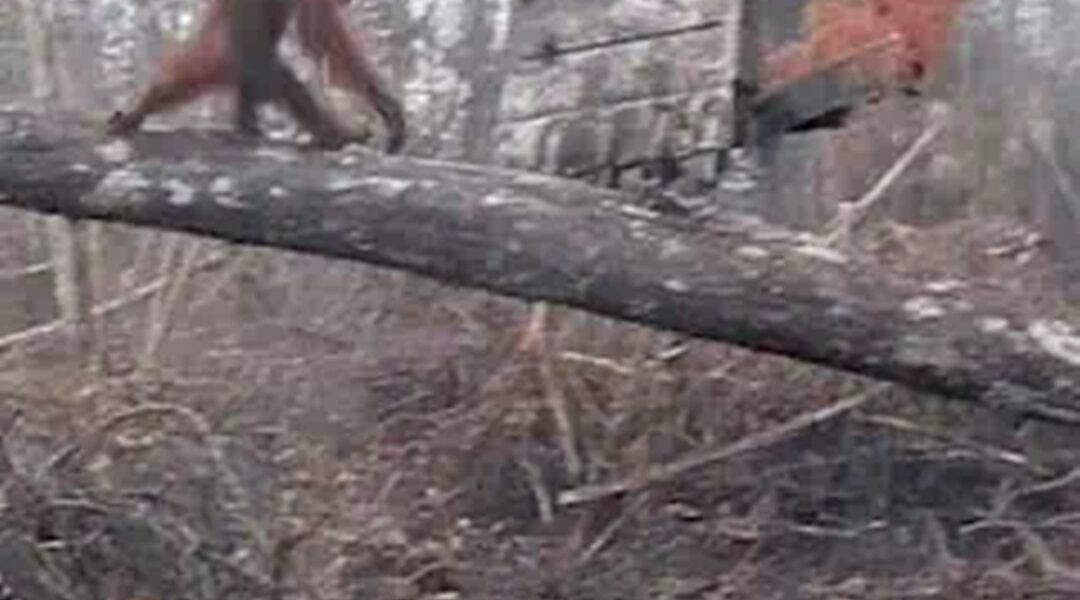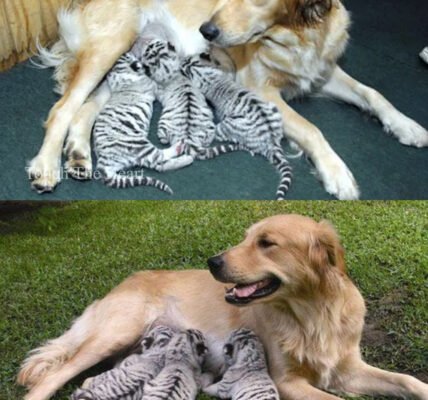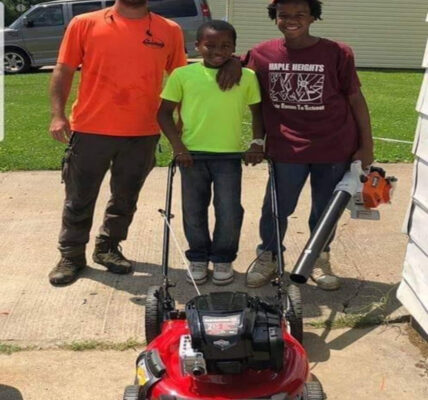In the dense green of the Sungai Putri forest in West Kalimantan, Indonesia, a heartbreaking scene unfolded—a scene now etched into the minds of millions who have watched the viral footage online.

An orangutan, clinging to the last of its home, stood face-to-face with an excavator. The giant machine roared and growled, its metal arm sweeping aside centuries of life with mechanical indifference. Trees that once sheltered generations of orangutans fell like dominoes, turning forest into wasteland. And in the middle of it all, one orangutan refused to flee.
The video shows the great ape climbing onto a fallen tree, its arms outstretched, swiping at the massive bucket of the excavator as though to push it away. The contrast was staggering: flesh against steel, a desperate soul against a lifeless machine. For a moment, it was almost as if the orangutan believed it could win, that sheer courage might be enough to protect the forest it called home.
But no matter how bravely it fought, the outcome was certain. The excavator continued forward, relentless, unstoppable. The orangutan’s world was collapsing around it, and there was nothing it could do.

Viewers across the globe felt the weight of that moment. It wasn’t just an animal on a tree; it was a symbol of something much larger. A symbol of what happens when human expansion collides with the fragile ecosystems that sustain life.
For decades, the forests of Indonesia have been under siege. Entire landscapes are cleared at a staggering pace, often burned or bulldozed to make way for palm oil plantations. In the process, the orangutan—one of our closest relatives in the animal kingdom—has been pushed to the brink of extinction. Once roaming freely through vast jungles, they are now cornered into ever-shrinking patches of forest, often left starving, orphaned, or killed.

The orangutan in the video was one of the “lucky” ones. Members of the International Animal Rescue organization were on the ground that day and managed to intervene. They tranquilized the distressed ape and carried it to safety, relocating it away from the chaos of the machines. But safety is temporary. Without a forest, without trees, what does survival really mean for an orangutan?
This scene was not an isolated tragedy. It is a snapshot of a recurring nightmare in Indonesia and across the tropics. Every year, thousands of hectares of forest are cleared, driving countless species from their homes. Orangutans, slow-moving and deeply dependent on the canopy, are among the hardest hit. Their numbers have plummeted. The Bornean orangutan, like the one in the video, is now listed as critically endangered.

Scientists estimate that only around 100,000 Bornean orangutans remain in the wild—a number that continues to fall. At current rates, they could disappear within a few decades. And with their disappearance, we risk losing far more than just one species. Orangutans play a vital role in their ecosystem. They disperse seeds, nurture biodiversity, and keep the forests alive. Their extinction would unravel the very fabric of the rainforest itself.
The viral footage struck such a chord because it forced us to look, to confront what is happening, often out of sight. The image of that orangutan standing against a machine is more than a moment—it’s a metaphor. It shows us the imbalance between human progress and nature’s survival, between profit and preservation.
But it also shows us something else: resilience. That orangutan didn’t give up without a fight. Against impossible odds, it still tried. It still believed its home was worth defending. In its struggle, many of us see a reflection of what we, too, should be doing—standing up for what cannot defend itself.
The International Animal Rescue continues to work tirelessly to save orangutans, rehabilitate orphans, and protect what remains of their forest home. But they cannot do it alone. Conservation demands global attention, from governments and industries to everyday people making conscious choices about the products they consume.
Because every bottle of shampoo, every packaged snack, every product that uses unsustainable palm oil comes at a cost—sometimes at the cost of a forest, a family of orangutans, or the quiet survival of a species that shares 97% of our DNA.
The image of that orangutan, climbing onto a tree and reaching out to stop a machine many times its size, will not easily fade. It is both tragedy and call to action. A reminder that while the fight may seem impossible, we cannot look away.
For if one orangutan can summon the courage to defend its home, surely humanity can summon the will to defend the planet we all share.




